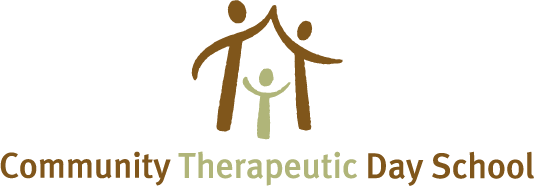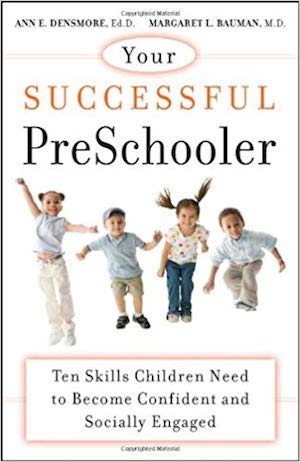Newsletters
2023-24
2022-23
2021-22
2020-21
Looking for older publications? Contact us and we will gladly provide you with past publications.
Recommended Books
To Hold and Be Held - Daniel K. Reinstein*
Synopsis
Drawing on the teachings of D.W. Winnicott and John Bowlby, who helped revolutionize thinking about relational psychology, To Hold and Be Held integrates the concepts of the 'holding environment' and attachment theory and describes how they are applied in a clinical setting. It also uses metaphor to both derive meaning from the language of the therapeutic process and to apply that meaning within a systems framework to effect significant therapeutic change.
As the number of children with complex problems increases and the facilities to treat and manage them decrease, schools are left with few resources to cope. Professionals such as teachers, psychologists, social workers, and counselors need a new framework in which to think about and advocate for services for these children. To Hold and Be Held describes the creation of a system of working that not only holds the child and his family, but also holds the larger system as well - a system in which therapeutic services are integrated at all levels and implemented in public schools in a way that supports all those involved. This is not only a unique and successful way of working with children and their families, but a timely one as well.
*CTDS Staff Psychologist
Leadership in Nonprofit Organizations - Barry Dym* & Harry Hutson
Synopsis
Leadership in Nonprofit Organizations is about exemplary leadership as found in both corporate and nonprofit organizations. The authors take a fresh approach to the study of leadership: they perform research in nonprofits both to understand and appreciate their complexities, and to reach conclusions about the nature of leadership in any context, including for-profit and governmental entities. Moving from nonprofit to for-profit in this way reverses the flow of ideas as represented in the mainstream literature of leadership. The authors' journey leads through case studies of remarkable leaders succeeding in complex situations. The book explores contemporary versions of leadership as embedded in American culture. It develops the concept of good fit between the leader and circumstances in which she or he must lead; it reveals predictable leadership dynamics and cycles; it explains how leaders can increase the readiness for change in their organizations; it describes the felt experience of "flow" when successful leaders are lost in the moment. Although each chapter employs a different lens, the object is the same throughout-leadership as the practice of alignment. The result is a multifaceted view of leadership as a complex system of shifting interrelationships that yields insights useful to students, researchers and leaders
*Consultant to CTDS
Donald Winnicott and John Bowlby: Personal and Professional Perspectives
- Bruce Hauptman*, Christopher Reeves & Judith Issroff
Synopsis
John Bowlby and Donald Winnicott were two of the most notable twentieth century pioneers in the application of psychoanalysis to child development and family studies. A series of essays, written by former students of both men, provides insight into the way they approached their work, in addition to novel and clarifying commentaries on their ideas.
The book covers such subjects as the problems of antisocial children, separation, loss, and grief. It pays attention to the social context and dimension of Bowlby and Winnicott's work and includes a novel examination of their contributions to the 1945 Curtis Committee's deliberations leading to the landmark 1948 Children's Act in Great Britain. Their different personalities and scientific attitudes are brought out in a lively and anecdotal way. The book ends with an extensive bibliography that links their own individual work not only to each other, but also to the many and varied strands of research and reflection that owe their origin to D.W. Winnicott and John Bowlby.
*CTDS Founder
Helping Children with Autism Become More Social: 76 Ways to Use Narrative Play - Ann Densmore*
Synopsis
Autism has been identified as the fastest growing, serious developmental disability in the United States, where nearly 2 million people are affected. One of the most frustrating aspects of autism and similar disorders is that affected children do not interact with others and often seem unaware of the people and the environment around them. Therapist Anne Densmore takes us with her as she works in a remarkable program she has developed to lead such children into the social world. Allowing readers to look over her shoulder during sessions, Densmore explains Narrative Play and her approach to inspiring social contact. They travel to farms, ponds, playgrounds, and other natural settings where they interact with peers and siblings, and with the novel therapist whose play therapy has brought remarkable results for many children.
*Speech and Language Consultant to CTDS
Your Successful Preschooler - Ann Densmore* & Margaret Bauman, MD
Synopsis
The latest research shows that children can be taught--at very early ages--the tools they need to become successful and connected to others. This new book offers parents and teachers the information they need to teach children the most effective ways to engage peers and make social interactions easier and more meaningful.
“Your Successful Preschooler”:
Shows how facilitated play can become an opportunity to improve your child's emotional connections with peers
Teaches parents & educators how to foster growth in vocabulary & language during play; keys to academic success
Presents dozens of anecdotes with dialogues parents can use to teach children how to better relate to their peers
Using the methods outlined in the book, parents and teachers can support activities that lead to a lifetime of social success and likeability that are crucial for every child's emotional stability.
*Speech and Language Consultant to CTDS
Integrating Neuropsychological and Psychological Evaluations
- Daniel K. Reinstein, PhD* & Dawn Burau, LMHC & SpEd**
Synopsis
This is a resource for neuropsychologists, psychologists, teachers and parents who wish to address both the neurologically and emotionally based difficulties with which their children are presenting. In addition to a thorough description of neuropsychological and psychological assessment tools, this book also provides professionals with a unified approach to using the results from assessments to understand and integrate cognitive, behavioral, social and emotional functioning in school-age children. It posits that to educate and treat children who are struggling in school due to unique cognitive or emotional vulnerabilities, the whole child must be considered to decipher his or her needs and implement interventions. Cultivating a therapeutic relationship that integrates the emotional and relational functioning of children enhances both their learning and their ability to successfully navigate the world.
*Clinical Director and Director of Research at CTDS
**Therapeutic Teacher at CTDS
These are selected vignettes that may be read in conjunction with chapters from the book:
Applying the Results of Neuropsychological and Psychological Assessments
- Dawn Burau, LMHC & SpEd & Daniel K. Reinstein, PhD
Synopsis
Neuropsychological and psychological evaluations in school settings are often rich in detail about a child’s cognitive, academic, and emotional functions, and come with specific recommendations to support the child’s performance in school. However, there is often a gap between the assessment results and the implementation of the recommendations, since learning specialists and teachers frequently do not have the means to both interpret and implement the recommendations. This manual presents clear and specific guidelines for school counselors and teachers to decode and put into practice evaluation findings.
The book begins by describing various functional domains that are assessed in a neuropsychological evaluation, and then notes how to recognize behavior and learning styles impacted by difficulty in one or more of the domains. Furthermore, it outlines activities that could be used in the classroom or other environments to support a child’s weaknesses, develop new skills, or appeal to particular strengths. Finally, ready-to-use worksheets and activities are offered. This is an essential tool for school psychologists, special education teachers, and learning specialists and counselors
Sibling Group Lends a Helping Hand - Olivia von Ferstel, SpEd, LMHC* & Bridget Glenshaw, LMHC**
Synopsis
For many children who have a brother or sister with special needs, the experience can be fraught with a wide range of emotions, from confusion to an overwhelming sense of responsibility. It can also develop a lens imbued with compassion and insight. Now, the co-founders of Sibling Group, an expressive art therapies based support group model, have created a compassionate, comprehensive guide to forming a Sibling Group that helps siblings cope with these conflicting feelings. Sibling Group Lends a Helping Hand is an indispensable resource to gain clinical insight into both the psychological and emotional dilemmas, as well as the extraordinary opportunities for compassion, relatedness, and growth. The reader will learn about the use of expressive arts therapies as applied to this unique support group format and gain confidence in communicating with siblings of children with special needs. Resources for other supports are included.
*Educational ProgramManager at CTDS
**Clinical Program Manager at CTDS








